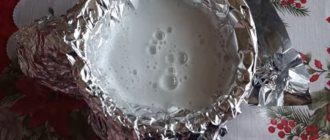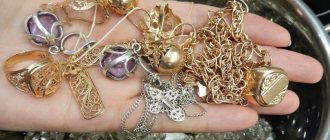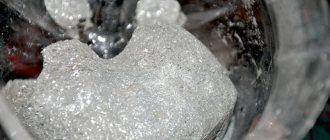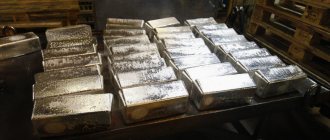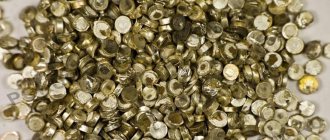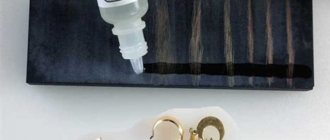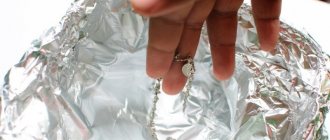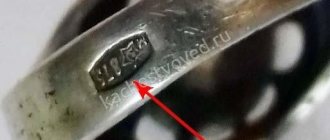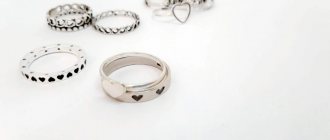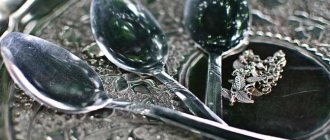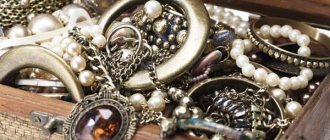July 26, 2020
Many radio components contain precious metals, among which a significant portion of silver can be found. In many of them it is present in the idea of an alloy, and in some it is even present in its pure form. This precious metal is a fairly ductile and malleable material. To extract silver from radio components, you must have the appropriate knowledge and associated containers and tools.
At home, it is highly not recommended to engage in independent silver extraction, since this entails liability before the law. If you have unnecessary old radio components at home, it is better to sell them. You can easily hand over radio components in the Kaluga region. Our purchase offers each client favorable conditions.
How to remove silver from contacts: various ways to obtain the precious metal
Over the past decades, the rapid development of the electronics industry has led to a decrease in the use of precious metals in the production of components and semiconductors.
However, during the existence of the USSR, precious metals were one of the main and extremely important components of manufactured radio electronics.
There is a specialized reference book for the content of precious metals, from which you can find out the list of precious elements that make up a particular electronics component.
The most common noble metal in radio components is technical silver. It is pure metal with minor impurities or no impurities at all.
Thus, technical silver is almost always a high-grade metal of 999 purity. In this article we will tell you where it is found and how to remove this metal from the contacts and separate it from the copper at home.
Chemical properties of technical silver
The very concept of “technical silver” is used for secondary precious metal obtained by processing equipment, and for material used in technology.
The properties of lunar metal that have contributed to its widespread use are plasticity, high reflectivity, and increased chemical resistance. The metal does not react with oxygen, hydrogen, nitrogen, carbon, or silicon.
Technical silver melts at temperatures from 780 to 962 °C, boils at 2210 °C.
Where is this precious metal found?
For precious elements in electronics, properties such as thermal and electrical conductivity, as well as light reflection, play an important role.
Thus, noble metals are used in the following radio components:
- Microcircuits . The most promising options for metal mining are Soviet-made microcircuits. It is preferable to disassemble microcircuits of the 564, 530, 133, 134, 142, 155 and 1533 series.
- Capacitors . In addition to silver, palladium, platinum and gold can also be found here. The volume of certain metals depends on the type of case (ceramic, yellow, silver and tantalum), as well as on the year of manufacture of the devices. These components were used in various computers, electronic devices and automatic telephone exchanges, as well as in tube televisions and tape recorders.
- Resistors . The basis of these radio-electronic elements is silver. The most cost-effective components are resistors of the PTP, PPBL, PPML and 5K series. It is recommended to collect Soviet resistors produced before 1982. The key difference between this component is the diamond-shaped marking.
- Connectors . These devices, both Soviet and foreign made, are suitable for extracting silver, technical gold and other precious metals. However, the content of precious metals in foreign-made components will be approximately five times lower.
- Transistors . Another electronics component containing a relatively large number of noble elements. The most preferred for silver mining are transistors with the index 2T935A, 2T944A, 2T945A and 2T998A.
In addition to the above radio-electronic components, technical silver may be contained in:
- generator lamps;
- LEDs;
- switches;
- buttons.
List of silver-containing components in electronics
The main sources of silver recyclables for refining are radio and electrical devices. In addition to lunar metal, devices can contain gold, palladium, tantalum, and platinum.
Soviet microcircuits
The largest amount of silver plating is found on microcircuits manufactured before 1990.
If we compare these Soviet parts with others, they are quite promising for refining. The most lunar metal per 1000 units of microcircuits contains:
- 1200ЦЛ2 - about 120 grams;
- 1200TSL1 - about 114 grams;
- 1200M1 - about 90 grams;
- K57ZRF41/42 - about 70 grams;
Technical silver
Electronic machine capacitors
Capacitors can be found inside computing devices, tube televisions, tape recorders, and telephone exchanges.
A significant amount of precious metal per 1000 units of parts contain:
- ETO-4 600*10 - 14163.6999 grams;
- ETO-4 - 8345.16 grams;
- ETO-3 400*2 - 2450 grams;
- ETO-3 - 1655.07 grams;
The cost of one capacitor varies from 50 to 5000 rubles.
Radio resistors
The most valued are variable resistors whose copper terminals are treated with high-grade silver.
The prevailing amount of precious metal per 1000 units contains:
- UN-100 – 207 grams;
- UNU50 – 132 grams;
- UN 25 – 67 grams;
Resistors are among the most widely used elements in electronics.
Domestic and imported connectors
Connecting elements are used to temporarily connect electrical conductors using mechanical contact.
Imported connectors are less preferable for refining, since they are three times inferior in precious metal content to Soviet ones.
A lot of lunar metal can be obtained from connectors: RG1N-2–31 RG90–5 (socket) RMG-39B45Sh2A1 RG1N-2–23 RG1N-2–29.
Transistors
A transistor is a radio-electronic component made of semiconductor material used to amplify, generate, switch, and convert an electrical signal.
How to obtain silver from radio components at home?
Silver is a highly inert metal, which means that this element has weak reaction-chemical properties. In other words, it is not easily dissolved.
Under normal conditions, silver does not dissolve in hydrochloric and sulfuric acids, as well as in aqua regia , like gold.
However, this metal has good solubility in oxygen-containing nitric acid.
The answers to the questions of how to isolate, smelt or otherwise extract technical silver from radio components come down to three main methods :
- Mechanical processing is the simplest method, suitable for some types of contacts that can be easily separated using pliers and wire cutters.
- Heat treatment - in cases where it is not possible to extract silver mechanically, there is an option to resort to using a gas blowtorch. When the heat is high, the silver elements can be easily separated from the holder using available means.
- Treatment with nitric acid - this method is used to extract precious metals from massive parts of radio-electronic parts. The method requires high care and accuracy at each stage of processing.
Heat treatment
Smelting is suitable for extracting precious metal from silver contacts where the silver is soldered onto the contact holder.
The tools you need to use are a gas torch or cutter, as well as a knife with a wooden handle .
The principle of operation is to heat the silver contact and then remove it using a knife blade.
When the temperature is sufficient, the contacts can be easily removed from the holder.
Nitric acid treatment
This method is used to extract silver from massive parts of radio-electronic parts, for example, contacts of starters or automatic machines.
For processing you will need:
- quartz stick;
- glass container;
- 8% nitric acid solution;
- copper.
When working with any acids, the following rules must be observed :
- It is important to ensure constant ventilation; the best option is to carry out work in the fresh air;
- eyes should be protected with special glasses, and the skin of hands with rubber gloves;
- you need to pour acid into water, and not vice versa.
First, you need to dilute the nitric acid by mixing deionized water and acid in a 1:1 ratio.
The resulting liquid must be mixed with a quartz rod. The amount of diluted acid must be taken into account based on the calculation of 50 grams of silver per 1 liter of liquid.
After that, dissolve the silver in acid mixed with water. The dissolution process is quite long and will take from 8 to 10 hours .
Use of silver in electronics. Technical silver in the USSR
Silver conducts electricity and heat better than other metals. It is inert to water, air, and some gases. It is used in a wide variety of industries, the list of which is constantly expanding.
The precious metal is used to create jewelry, in the production of contacts for various electrical products, for minting coins, as a means of investment, in the production of mirrors, clothing, batteries, in the chemical industry, and photography. The volumes of lunar metal attributable to the industrial sector exceed 70% of global production.
Silver alloy wire
During the Soviet era, they did not skimp on silver in the production of radio components. The metal used in this area is called technical. This is a special alloy containing copper, nickel, tin, aluminum, cadmium as impurities. The number of additives is not large, usually does not exceed 0.2% of the total composition. The bulk of it is pure silver.
The exception is magnetic and non-magnetic samples of technical precious metals. Here the silver content varies from 60 to 80%.
If jewelry metal performs a decorative function, then technical metal must provide electrical conductivity and reflection of light.
Sales of the resulting metal raw materials and its average price per gram
For the subsequent sale of precious metal from contacts, you need to know its resulting mass and sample. As mentioned earlier, technical silver used in radio electronics is a pure metal of 999 purity.
Accordingly, metal obtained mechanically or by smelting will be 999 fine. If silver was extracted chemically using nitric acid, the output would be a metal of approximately 980 fineness. This is due to the copper impurities present in silver.
The direct cost will depend on two main factors :
- percentage of pure silver in the resulting alloy;
- places of sale of precious metals.
For 2021, the price for 1 gram of technical silver scrap is as follows :
- sample 999 – from 24 to 35 rubles;
- 980 – from 21 to 27 rubles;
- 960 – from 16 to 22 rubles;
- 925 – from 9 to 11 rubles.
When selling more than 1 kg of precious metal, you can earn 2-4 rubles more for each gram of it.
It is also most likely that on the Internet, using thematic sites and forums, you can find buyers who are ready to offer a higher price for those. silver from contacts than from a pawn shop.
Parts care
It is necessary to periodically check the condition of the silver contacts. In case of contamination, clean with a suede or cloth cloth slightly moistened with gasoline. You can also use a stiff hair brush for cleaning. If sagging occurs on the silver contacts, they should be carefully removed with a finely cut file.
Silver in radio components is often found in the form of large silver contacts or silver-plated coatings. Extracting white metal from electronic components is not a simple process. It is a precious metal with a high degree of inertness. It reacts reluctantly with other elements and does not react at all with acids and alkalis.
The chemical inertness of silver makes it difficult to extract it from radio parts. Is it profitable to extract silver from them for subsequent sale? Extracting it from electronic parts is advisable only when it is contained in large components and aggregates, because silver-plated parts have a low proportion of metal in their composition. Often large parts in electronics are silver in the form of compounds with other elements. Small parts or surfaces coated with a silver layer contain mainly pure silver. Silver has been used in radio components for quite a long time.
How to separate silver from large parts? It is worth remembering that silver interacts well with nitric acid (which contains oxygen). This material can be extracted from large elements of radio components (for example, starters and automatic machines) using nitric acid.
In order to speed up the reaction, the acid should be heated. To heat it up, place the container with the acid in warm water (water bath).
Please note that you should not pour a very large volume of acid into the container. The reaction of silver and nitric acid is accompanied by significant heating. If there is too much acid in the container, it will overflow.
Methods for separating silver from copper at home
Experts say that nowadays, silver (Ag) products are becoming increasingly popular. There are many reasons for this - the price, which is an order of magnitude lower than that of gold, practicality, and, of course, beauty.
Pure silver without impurities is very rare. The procedure for separating it from copper is becoming more and more popular, because it is quite rare to find products made from pure silver without impurities. The separation process is called refining, and it can even be done at home.
Metal properties
For at least six thousand years, humanity has known what silver looks like. The white (now we can add metallic to this definition) shine most likely attracted the first people to its nuggets. Initially, argentum found application in the manufacture of weapons and jewelry, but not only.
The properties of argentum noted by ancestors determine its use today:
- Silver was placed in water (or kept in containers made of this metal). The metal killed harmful microbes. Christian priests still use this method now, and there are special products for water purification and Ag-based bactericidal medicines on sale.
- “If I make silver water, I have excellent taste,” the Russian Empress Catherine II noted. Metal ions are still used today in the bottling of mineral waters. It is believed that it gives not only a healing, but also a rejuvenating effect.
- The metal was used as talismans against evil spirits, and weapons made from it were used to fight black forces. Silver amulets are also popular in the 21st century. Any jewelry made from it can be considered as such.
- Ancestors made mirrors from metal. Ag has ideal reflective properties. Nowadays, high-precision mirrors are made from it, which are used in science and technology.
- Despite its refractoriness, silver is very ductile and easy to process. Therefore, jewelry made from it is unique and varied. The finest silver threads are used in optics and electrical engineering.
This is a truly unique metal with rich properties. Previously, shiny coins were placed in milk to prevent it from turning sour longer. Nowadays, some elements for underwater vehicles and spacecraft are made from argentum, which can support enormous loads. Silver will surely take a person into the distant future.
What is the refining procedure?
It has long become popular to extract pure silver from alloys from which various parts and contacts are made. In order to obtain real pure precious metal at the output, you need to use a special separation technique called refining. It is thanks to it that you can separate silver particles from other metals, including copper.
Small silver bars for refining
Ideal for extracting pure silver:
- Scrap old silver jewelry;
- Waste from electrical cleaning of silver;
- Technological scrap, which contains silver;
- Waste from lead production, which is popularly called “silver foam”.
There are several ways to help separate Ag from other metals. The main ones are:
- cupellation;
- electrolytic method;
- chemical method.
The choice of method to be used depends on the volume of material, its composition and condition.
Features of silver contacts
The contacts of electronic parts may contain varying amounts of pure material. Compounds from it can be divided into groups:
- Not having the ability to magnetize. This form contains a large proportion of pure material.
- Magnetizable. This type contains a smaller proportion of pure metal.
- On copper. The soldering on such contacts is a copper plate coated with a thin layer of metal.
Silver contacts are used in low-power devices. In addition, gold, platinum and other precious materials are used in small and critical contact electrical devices.
There are several types of parts containing this material:
- electromagnetic starters;
- electrical machines;
- relay;
- temperature sensors;
- silver-zinc batteries.
On the surface of parts and contacts containing this noble metal, which come into contact with sulfur-containing rubber, as well as ebonite, silver sulfide forms in the form of small crystals.
This process is also accompanied by corrosion. Under the influence of sulfur dioxide, silver sulfate is formed from the contacts during atmospheric corrosion.
Safety precautions during refining
Before you begin the process of refining silver, at enterprises and at home , you must follow the mandatory precautions and safety instructions:
- good room ventilation;
- use of rubber gloves, special clothing and safety glasses;
- Working with nitric acid requires the use of a respirator. Nitrogen vapor is very poisonous;
- When mixing water and acid, you should never add water to concentrated acid, only vice versa.
Mistakes when refining silver
- Excessive amounts of nitric acid will lead to a bad reaction, the release of nitric oxide (" red tail ") in particular.
- The vertical arrangement of the electrodes one above the other when refining silver by electrolysis significantly weakens the effect of the electrolyte, and the silver is separated very slowly.
- During electrolysis, excess current can produce silver oxide, causing the precious metal to turn black.
- A fatal mistake is failure to follow safety rules when refining silver by any method. Inhalation of toxic chemical fumes, burns, etc. will not please the silver miner.
Electrolytic method
Another method that will help separate Ag from copper is electrolytic. To implement this, you will need cells made of plastic or sandstone containing a solution of silver nitrite.
The cathode is a strip of stainless steel on which silver is collected.
The amount of precious metal in the solution must be at least 50 grams per 1 liter of liquid. The contaminated silver itself acts as the anode of this reaction, and thin stainless strips act as the cathode.
Anodes, that is, contaminated silver, should be placed in small bags. It is in them that dirty metals will remain and will not dissolve during cleaning. Small crystals of pure silver will appear on the cathodes. They grow in the opposite direction to a short circuit and break very easily to avoid the same.
Such small crystals gradually break off and collect at the bottom in a special basket, from which they must be periodically removed. Pure silver ingots are smelted from the resulting crystals.
Cleaning silver from impurities
Highest standard silver
In the final part of the refining, you need to build an electrolytic bath. The bottom of a cut lemonade bottle can be used as a container. The height of the container must be such that it can hold at least 1 liter of solution.
A block made from silver cement is placed in a tea filter. A ribbon of pure silver is welded to it in advance and clings to the middle of a brass stick. It is necessary to put insulation on it, since it will play the role of an anode. The stick is threaded through the edges of the tea filter and placed above the bath.
The fork handle is wrapped with electrical tape, and its end is bent so that the fork can be hung on the edge of the bath. The result was a miniature electrolytic container.
The solution with silver nitrate is diluted with distilled water in a 1:1 ratio and poured into the bath. The liquid should not touch the joint between the silver bar and the tape, otherwise the metal will dissolve.
The plug is placed in the bathroom, a “minus” cable goes from the power supply to it, and a “plus” cable goes to the brass stick. Make sure that the current voltage is no more than 4-8 W and the power is 5 A.
The reaction begins immediately: the walls of the bath are covered with silver crystals, and the bar gradually becomes smaller. The tea filter is used to collect suspended matter and debris. The crystals should not reach the tea bag, otherwise a short circuit will occur.
Place the electrolyte solution in a container. The resulting crystals need to be washed several times in water, dried and fused into one piece, as was previously done with silver cement.
The refining is complete, as a result you have received 999 silver, from which you can make original jewelry.
How the process itself works
Silver jewelry should be placed on a suitable surface that has low thermal conductivity and will not be destroyed by exposure to high temperatures, such as brick.
Then the place where the weld will be located needs to be coated with flux and a piece of solder placed there.
Now you can take the burner and smoothly move it towards the product. The treated area should warm up evenly. And as soon as the flux has completely melted, the heat must be increased and soldering continued until a truly reliable seam is formed.
If the solder and flux suddenly run out, you need to carefully add new portions of them to the same place.
Upon completion of soldering, the product must be cleaned of flux and solder residues. Sandpaper is suitable for solving this problem. Additionally, the surface of silver can be treated with a solution of citric acid for brightening or with an iodine solution for blackening.
Do not forget that soldering must be carried out in a ventilated area, and the person performing this operation must be protected by a mask or goggles
Sales of production
Do not forget that activities for processing scrap and waste of precious metals are subject to licensing in accordance with the legislation of the Russian Federation.
Individual entrepreneurs and legal entities have the right to buy and process the remains of precious metals if they have a certificate from the Assay Office.
If you try to sell metal that you yourself obtained from radio components to buyers, you should find out about criminal liability for illegal mining and sales.
Violations are regulated by Article 15.44 of the Code of Administrative Offenses, which states: the amount of the fine will be one or one and a half times the cost of the materials that are the subject of the offense.
Cost of various samples
The cost of any sample depends on the price of pure precious metal established by the Central Bank of the Russian Federation. To determine the current cost of the sample, you need to multiply the current price of the highest alloy by the required coefficient.
Current sample prices for 2021:
| Try | Cost per gram, rub. |
| 999 | 37 |
| 960 | 35,5 |
| 925 | 34 |
| 875 | 32 |
| 830 | 30 |
Silver from radio components usually has 999, 960, 875 standards.
Sales points
Buyers should be looked for on thematic forums and websites, among private advertisements. Pawn shops and purchases accept such metal several times cheaper than its real value.
If there is no license permitting the extraction of precious metal from recycled materials, you can try to make simple jewelry yourself from the resulting silver.
Chemical method
Materials needed: nitric acid 68.8%, deionized water, scales, glass container and quartz rod
For the separation itself, you will need hydrochloric and nitric acid. Before you begin, carefully inspect the copper and silver product. This could be a coin or wire, or a piece of jewelry. Determine whether the composition actually contains copper. This is quite simple to do, because everyone has long known that copper is not attracted by an ordinary magnet, but is an excellent conductor of electricity, so this is very easy to do at home using an ordinary magnet.
Dissolving silver in acid
Cupellation
If the silver content in the alloys is low, refining is carried out using cupellation
This method is most often used if low-grade alloys are used for cleaning.
The method is based on the unique properties of lead, melted with silver, to oxidize and independently separate from the silver, taking all impurities with it. But this does not apply to gold and platinum, which still remain alloyed with silver.
For cupellation, special furnaces are used with crucibles and covered with a special type of porous clay, which perfectly absorbs metal oxide.
Ag cupellation process sequence:
- Before the procedure, you need to preheat the oven, ensuring a temperature of 850-900°C;
The surface of the alloy acquires a rainbow color, and a silver sheen is also observed.
After the alloy has completely cooled, it will acquire a special rainbow color. This means that the alloy consists solely of silver and other precious metals.
Required materials and tools
In accordance with the descriptions of each of the individual methods of refining silver at home, we provide lists of materials and tools necessary for their implementation.
- Special cells made of sandstone or plastic.
- Nitric acid.
- Fabric bags.
- Sodium sulfite.
- Ammonium chloride.
- Salt.
- Nitric acid.
- Sulfuric acid.
- Special utensils, the material for which is selected depending on the components of the procedure.
The set of basic ones directly depends on which method of obtaining silver you have chosen.
So, to refining Argentum elements you will need:
- glass container;
- quartz stick;
- Nitric acid;
- ammonium chloride;
- salt;
- sodium sulfide;
- any filter;
- funnel;
- deionized water;
- copper scrap.
We invite you to familiarize yourself with Turquoise jewelry photos. When carrying out cupellation, you need to prepare:
To perform electrolysis you need:
- power unit;
- insulating material;
- stainless steel fork;
- insulating tape;
- tea bag bag;
- any plastic container.
Grandma's tips
In jewelry, metal is not used in its original, pure form (the same applies to the production of cutlery). Other components are added to the alloy, which give additional strength. The classic option here is copper. To distinguish real silver from a fake, you need to talk not about Ag as such, but about the percentage of its content in the alloy.
of people living today were able to determine the purity of metal without any drugs or devices
- Argentum is very thermally conductive - it heats up quickly and cools down quickly. If you hold it in your fist, it will immediately acquire body temperature. You can put it in boiling water (if the decoration does not have stones) and then pick it up. Real metal will burn, but not for long.
- The product can be rubbed in your palms for several minutes. If the skin remains clean, the alloy is good; if dark traces remain, there are excess impurities (most often zinc).
- Silver ringing is not just a stable phrase. When gently tapped, the jewelry rattles; the argentum vibrates lightly and protractedly. The percussion instrument should be something akin to a knitting needle.
- If you place a spoon made of Ag in the sun, it will brightly reflect the rays and shine. A cheap alloy will give a dull glow, or even a barely noticeable one.
- People with a keen sense of smell (and good experience) distinguished silver by smell. They assured that pure metal smelled of freshness and lily of the valley. Now this method is hardly suitable for everyone - modern perfumery will make even iron smell like roses.
- Argentum has a high density. Even a small product made from it should be felt in your hand. And today it is so easy to distinguish silver from much lighter aluminum.
- Previously, the ring was covered with crumbs of rye bread and left there for two days. If the jewelry noticeably turned black during this time, this was a good sign - the alloy was considered to be of high quality. With today's bread this test may not pass.
- You can try to bend the spoon (plate). An object made of normal argentum will yield quite easily and will have almost no spring. But this method will not give a 100% guarantee: you can also bend a steel device. And it will be difficult to return the item to its original appearance.
All these tests were based on knowledge of the properties of Ag. Knowledgeable people could determine the authenticity of the metal by its appearance. This is probably still available to experienced jewelers.
Source
Tools we will need
Many of the tools may already be available to DIY radio enthusiasts. Otherwise, you will have to purchase them or make them yourself from scrap materials.
Therefore, before unsoldering the radio component, get the following devices:
- A soldering iron of the required power and design for heating the contacts of radio components . You can take a ready-made one, or you can make it yourself; the manufacturing process is described in detail in the following article:
- Tweezers or clamp - used for manipulating radio components. Allows you to hold elements with tweezers, fix their position and provide additional heat removal when you try to desolder them.
- Tubular-shaped needles are sold ready-made, but if you don’t have any on hand, they can be replaced with a regular medical syringe needle, the main thing is that the inner diameter fits onto the stem of the radio component. In addition to needles, you can use tubes or sleeves; with their help, heated radio components are separated from the solder.
Rice. 1. Set of soldering needles
- Dismantling braid also acts as an auxiliary tool if you need to desolder those elements that have a large number of legs on the printed circuit board. You can either purchase a ready-made one or make it yourself.
Rice. 2: dismantling braid
- A desoldering pump is a device for removing solder from a mounting location, allowing you to quickly desolder a large number of radio components. Structurally, it includes a vacuum flask, a return spring and a piston driven by it. In addition to purchasing a factory model, you can make a desoldering pump yourself.
Rice.
3. Desoldering pump Inexperienced electricians may argue that so many tools for desoldering radio components will be too many. After all, soldering is performed using a regular soldering iron, but all of the above devices will help you solder the necessary elements quickly and accurately. This is especially true with large volumes of contact pins in the board. Now let's look at the practical application of each of the tools described above. Source
Refining of silver contacts.
1. In the photo above, the contacts were removed from the contact plates using wire cutters; there are also several magnetic ones (which are taken with a magnet). Then these contacts are washed well (poured them into a half-liter jar, poured hot water and dishwashing detergent, mixed with a paint brush, you can add soda and rinsed well in running water) to get rid of dust, oil and other fuel oil. Contact weight 240 grams.
2. Take a glass container and mix the acid with distilled water 1:1
Attention: acid is poured into water, and not vice versa.
120 ml of acid and 120 ml of water. And mix well with a glass rod. Of the 240 grams of contacts, we cannot know how many grams of silver there are and how much copper, we just divided them in half and got 120 grams. I took approximately 120 ml of acid, at the rate of 1 ml of acid per 1 gram of silver. It is better to take less and add as needed until completely dissolved. In practice, more acid will be lost. And so we immerse our contacts in a container with diluted acid.
As can be seen in the photo, copper and acid form a violent reaction, releasing a large amount of heat and nitrogen dioxide. To slightly but still reduce acid consumption, cover the vessel lightly with a plastic lid to avoid splashing and evaporation of nitrogen dioxide. I don’t have heat-resistant dishes, so everything was done in an ordinary jar. And so that our efforts are not in vain and we do not lose all our silver, which has already dissolved. I placed the jar in a square textile container in case it, God forbid, burst, because it gets quite hot.
Stirring occasionally, monitor the reaction and if it stops, add 20-50 ml of acid. You can put it in a sand bath, I didn’t risk it, I just poured boiling water into a textlit container a little at a time and immersed the jar. As the temperature increases, the rate of dissolution increases. And so our goal is to dissolve all contacts, there are of course exceptions, magnetic ones, which do not dissolve completely, as well as all kinds of ceramics that are not exposed to acid.
